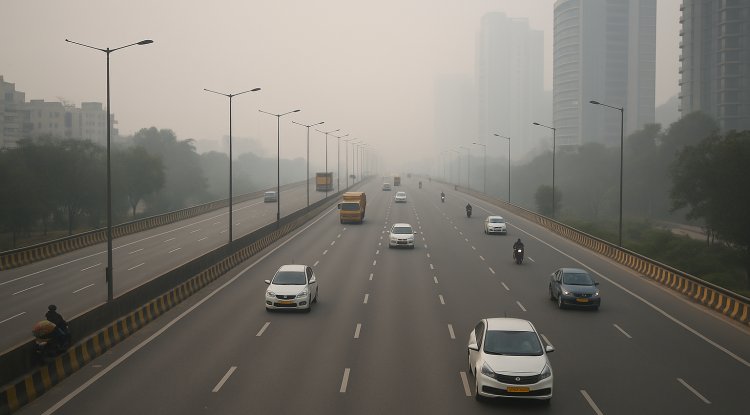Philippine Schools Struggle to Cope with Climate Risks and Infrastructure Gaps
Philippine schools face worsening infrastructure issues as climate risks increase. Classroom shortages, poor ventilation, and disaster-prone buildings highlight the urgent need for better funding and climate-resilient planning in education.

As almost 27 million Filipino students went back to schools in June 2025, common problems relating to school facilities and climate peril remain the biggest of its challenges. Though the government tinkerered occasionally with school calendars to prevent unfavorable weather disturbances, underlying concerns are taking tolls—mostly the absence of climate-resilient school facilities and fixed education appropriations.
As a response to intense heatwaves in April and May that prompted wholesale school shut-downs, the Department of Education returned to the previous June-to-March school year. While this new policy will lower heat-related interruption, it does little to rid the country of its underlying issues—ancient buildings, lack of classrooms, and exposure to climate risks like typhoons and flooding.
There is now a projected shortage of 165,000 classrooms in the Philippines. Major urban cities like Metro Manila also have classroom enrollments that frequently exceed the official figure, with several having a mean of 48 students—more than double the optimal 35 for elementary and 40 for high school levels. The net effect of decades of natural disasters has also undermined school structures further, making learning spaces more inhospitable and unconducive, particularly during the period of uncommon weather.
The United Nations Children's Fund has indicated that 96% of children in the Philippines are exposed to cross-cutting climate risks such as flooding, high heat indices, and tropical storms. Public schools lack proper protection with minimal safeguards such as flood protection, ventilation, and disaster-resistant building design. These create extensive learning losses and impair children's health and well-being.
While teachers and parents provide temporary solutions to school maintenance shortages by providing electric fans, repainting classrooms, or even volunteer work, education activists insist that stopgap measures are not long-lasting. Instead, demands for more state expenditures to meet infrastructure requirements are made. Public schools usually have yearly budget deficits that discourage maintenance and upgrade activities. For example, the Department of Education's immediate response fund, reserved for emergency repairs following catastrophes, remains idle.
The 2024 report of the Philippine Institute for Development Studies also made reference to deteriorating classroom conditions, how rising enrollment with inadequate maintenance has yielded dense and unsafe learning environments. Over 39,000 schools have reportedly been found to need electrical upgrade to avoid electricity fluctuations, fires, and to enhance ventilation systems.
While the Philippine state is committed to developing climate-resilient schools, the process has taken minimal time. A climate-resilient school, per the Department of Education, is safe, resilient, inclusive, and climate disaster-resilient. But real progress in this direction remains scarce. While the President's agenda is to retrofit schools and build disaster-resilient infrastructure, budget constraints have hindered mass implementation.
The education sector is getting only about 3% of the nation's gross domestic product (GDP), below the international normal rate of 4–6% advocated by UNESCO. The lack of funding has a direct impact on the state's capacity to build new classrooms, keep the existing ones in working condition, and employ sufficient staff. Teachers are sometimes expected to take on several roles—be counselors or health workers—without being paid extra or given any training.
To tackle class overpopulation and minimize health risks during heatwaves, more schools are advised to be constructed in safer places, particularly those that are also flood zones. Improved air flow and ventilation are also recommended, particularly as most schools lack funds for installing and maintaining air conditioning systems.
Other teachers contend that reverting to the previous year's school year calendar is merely a Band-Aid. Long-term building resilience requires commitment to more school facility and emergency response investment. Absent planning, record heat and storm-related school closures will remain an interruption in education, especially in low-income communities where children already lack resources.
Another suggestion by education agencies is to expand digital and hybrid learning channels. This is particularly helpful for weather-sensitive or rural schools that continuously reschedule classes due to bad weather. Nevertheless, digital learning technologies and internet connectivity continue to be uncertain throughout the country, further exacerbating the gap in learning among underprivileged students.
It would take a half-century to resolve the classroom crisis. It would be more than half a century before the deficit of classrooms is overcome at the rate of construction going on now, the Department of Education said. Meanwhile, the majority of students will continue to study in crowded, poorly ventilated, and disaster-prone classrooms.
The general state of Philippine schools highlights the imperative need for a national campaign to construct climate-resilient, suitably equipped classrooms. Physical safety issues are more than a matter of structure; they have a direct bearing on the quality of education and well-being of millions of school-age children. Unless there is a radical policy change and a long-term investment, the education sector will be extremely vulnerable to man-made and natural disruptions.
Source-Thomson Reuters Foundation, originally published at https://www.context.news. Republished with permission.
What's Your Reaction?

















